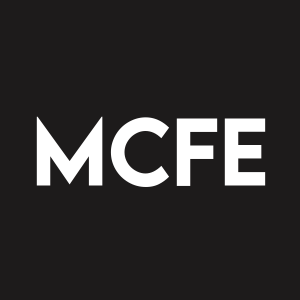McAfee Sees COVID-19-Themed Threats and PowerShell Malware Surge in Q2 2020
McAfee Corp. (Nasdaq: MCFE) has released the McAfee Labs Threats Report: November 2020, detailing cyber threat activities for Q2 2020. Key findings include an alarming average of 419 new threats per minute, a 605% rise in COVID-19-related attacks, and a 117% increase in PowerShell malware. The report highlights the adaptability of cybercriminals targeting remote workers due to the pandemic. Notably, 7.5 million external attacks were noted on cloud users. The cybersecurity landscape continues to evolve rapidly amid ongoing challenges.
- Average of 419 new threats per minute in Q2 2020, a 12% increase from Q1.
- 605% rise in COVID-19-related attack detections compared to Q1.
- 117% increase in PowerShell malware, indicating a growing threat landscape.
- 7.5 million external attacks on cloud user accounts, highlighting significant cybersecurity challenges.
- Overall new malware samples increased by 11.5%, suggesting a growing threat landscape.
- Decrease in disclosed incidents targeting North America by 30% could indicate underreporting or reduced activity in a key market.
Insights
Analyzing...
SAN JOSE, Calif.--(BUSINESS WIRE)--McAfee Corp. (Nasdaq: MCFE), the device-to-cloud cybersecurity company, today released its McAfee Labs Threats Report: November 2020, examining cybercriminal activity related to malware and the evolution of cyber threats in Q2 2020. During this period, McAfee saw an average of 419 new threats per minute as overall new malware samples grew by
“The second quarter of 2020 saw continued developments in innovative threat categories such as PowerShell malware and the quick adaptation by cybercriminals to target organizations through employees working from remote environments,” said Raj Samani, McAfee fellow and chief scientist. “What began as a trickle of phishing campaigns and the occasional malicious app quickly turned into a deluge of malicious URLs, attacks on cloud users and capable threat actors leveraging the world’s thirst for more information on COVID-19 as an entry mechanism into systems across the globe.”
Each quarter, McAfee assesses the state of the cyber threat landscape based on in-depth research, investigative analysis, and threat data gathered by the McAfee Global Threat Intelligence cloud from over a billion sensors across multiple threat vectors around the world.
COVID-19-Themed Threat Campaigns
After a first quarter that saw the world plunge into pandemic, the second quarter saw enterprises continue to adapt to unprecedented numbers of employees working from home and the cybersecurity challenges this new normal demands. In response, McAfee launched the McAfee COVID-19 Threats Dashboard to help CISOs and security teams understand how bad actors have retargeted increasingly sophisticated techniques toward businesses, governments, schools, and a workforce coping with COVID-19 restrictions and the potential vulnerabilities of remote device and bandwidth security. Over the course of Q2, McAfee’s global network of over a billion sensors observed a
Donoff & PowerShell Malware
Donoff Microsoft Office documents act as TrojanDownloaders by leveraging the Windows Command shell to launch PowerShell and proceed to download and execute malicious files. Donoff played a critical role in driving the
Attacks on Cloud Users
McAfee observed nearly 7.5 million external attacks on cloud user accounts. This is based on the aggregation and anonymization of cloud usage data from more than 30 million McAfee MVISION cloud users worldwide during the second quarter of 2020. This data set represents companies in all major industries across the globe, including financial services, healthcare, public sector, education, retail, technology, manufacturing, energy, utilities, legal, real estate, transportation, and business services.
Q2 2020 Threat Activity
-
Malware overall. McAfee Labs observed 419 new threats per minute in Q2 2020, an increase of almost
12% over the previous quarter. Ransomware growth remained steady compare to the first quarter of 2020. -
Coinminer malware. After growing
26% in Q1, new Coinmining malware increased25% over the previous quarter sustained by the popularity of new Coinmining applications. -
Mobile malware. After a
71% increase in new mobile malware samples in Q1, Q2 saw the category slow15% despite a surge in Android Mobby Adware. -
Internet of Things. New IoT malware increased only
7% in Q2, but the space saw significant activity by Gafgyt and Mirai threats, both of which drove growth in new Linux malware by22% during the period. -
Regional cyber activity. McAfee counted 561 publicly disclosed security incidents in the second quarter of 2020, an increase of
22% from Q1. Disclosed incidents targeting North America decreased30% over the previous quarter. These incidents decreased47% in the United States, but increased25% in Canada and29% in the United Kingdom. -
Attack vector. Overall, Malware led among reported attack vectors accounting for
35% of publicly reported incidents in Q2. Account Hijacking and Targeted Attacks accounted for17% and9% respectively. -
Sector activity. Disclosed incidents detected in the second quarter of 2020 targeting Science and Technology increased
91% over the previous quarter. Incidents in Manufacturing increased10% , but Public Sector events decreased by14% .
Resources:
About McAfee Labs and Advanced Threat Research
McAfee Labs and McAfee Advanced Threat Research are a leading source for threat research, threat intelligence, and cybersecurity thought leadership. With data from over a billion sensors across key threats vectors—file, web, message, and network— McAfee Labs and McAfee Advanced Threat Research deliver real-time threat intelligence, critical analysis, and expert thinking to improve protection and reduce risks.
About McAfee
McAfee Corp. (Nasdaq: MCFE) is the device-to-cloud cybersecurity company. Inspired by the power of working together, McAfee creates consumer and business solutions that make our world a safer place.www.mcafee.com
McAfee® and the McAfee logo are trademarks of McAfee, LLC or its subsidiaries in the United States and other countries. Other marks and brands may be claimed as the property of others.







